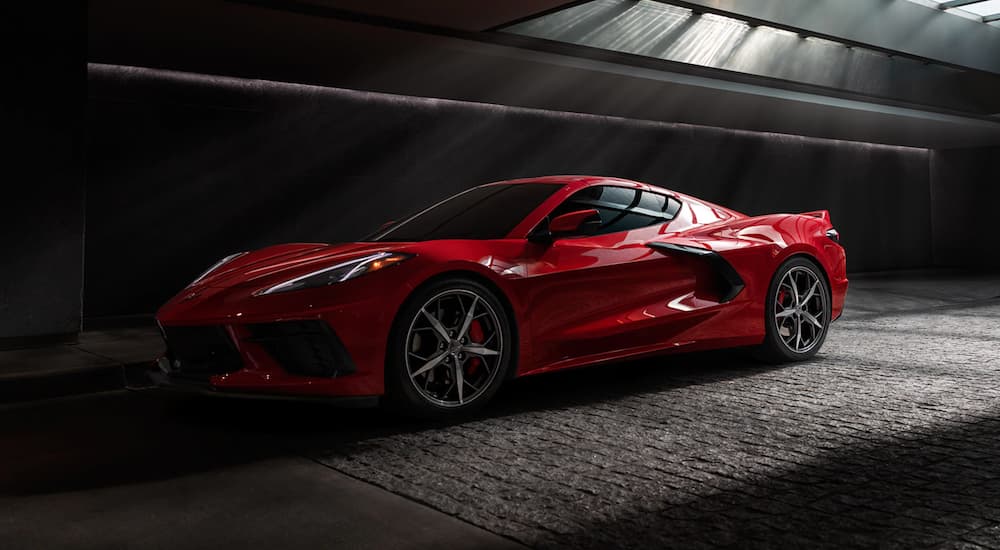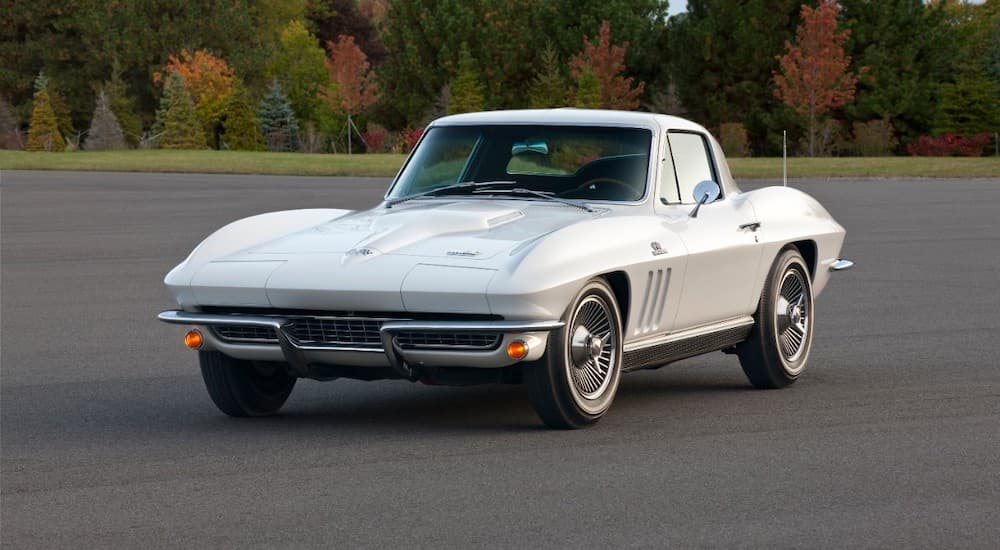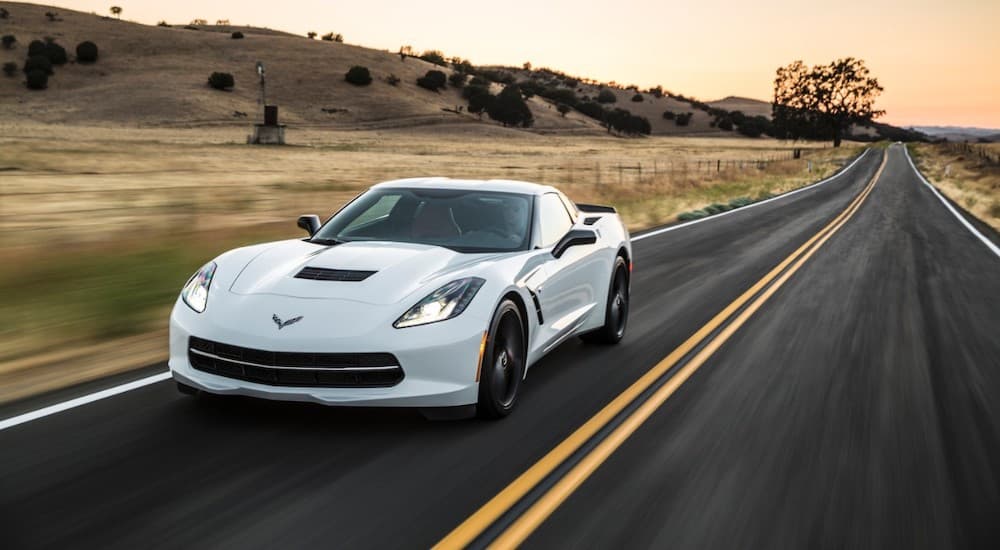Ah, the Chevy Corvette. First introduced in 1953 as a concept car to showcase a number of unique ideas, only 300 models were hand-built in its first year. In the decades that followed, the Corvette has become an iconic and lasting part of the American auto industry—and one of the most popular sports cars ever made. Today, you might find a number of options; a pre-owned C8 Corvette from a dealership near you is an affordable mid-engine beast with outstanding capabilities.
Throughout all of these years, the Corvette hasn’t just been a legendary part of traffic and auto shows; it has also made numerous appearances in all aspects of popular culture. From film and television to music and more, the Corvette is a fundamental part of America and Americana at this point. In celebration of the upcoming 70th Anniversary of the ‘Vette (yeah, it’s next year, but I don’t feel like waiting), I thought it would be fun to take a look back at some of its more noteworthy and remarkable appearances in media and pop culture over the years.
Hollywood Loves a Corvette
There are plenty of vehicles that have been utilized famously on the silver screen, though few with as much flair and drama around them as the Corvette. We’d be here all day listing every appearance in a film, but there are some notable uses that have really stood out over the years. One of the first times I recall seeing one in a movie was Otter’s Corvette in Animal House, which seemed incredibly out of place for a college student—and that was exactly the point. His presence makes very little sense at Faber College or at Delta House, but it works perfectly—and showcases that pretty much anyone can belong there.
While Otter’s ‘Vette was a classic from the 1950s, a ’77 Corvette makes an equally iconic appearance in the film Boogie Nights. I’m not going to get too deep into the plot here, but the car is a symbol of the main character’s rise to fame and fortune—along with his eventual fall from grace. Just as he physically and emotionally falls apart due to neglect and all manner of abuse, so too does his vehicle end up in disrepair and rough shape. Cars can be fantastic symbols in films, and in Boogie Nights, a Corvette perfectly acts as a physical, literal representation of what’s going on within the character.
Perhaps the most iconic use of this gorgeous car is in the aptly named Corvette Summer, a 1978 film that showcased a young Mark Hamill just starting to experience sudden Star Wars fame. As the name of the film would suggest, a Corvette plays a pretty large role; the movie’s premise is that Hamill’s character is a high school student whose beloved ‘Vette has been stolen, so he goes on a madcap adventure to Las Vegas to get it back. It’s not an amazing movie, but it’s a fun watch. It’s hard to see it and not have the titular vehicle leave a lasting impression—whether you’d go on an interstate journey to reclaim it is up to you.
The ‘Vette Goes to the Small Screen
As far as I’m aware, there haven’t been any TV shows named after a Corvette, but that hasn’t stopped them from appearing in a number of different programs and episodes. They were very popular throughout the 1970s and 1980s and made appearances in a wide range of shows, from episodes of Facts of Life and Route 66 to Miami Vice and 21 Jump Street. More recently, Corvettes from various years and generations have made appearances in shows like Veronica Mars and Better Call Saul—usually representing a character with tremendous wealth and a desire to flaunt it.
One of the most recent starring roles for a Corvette was as “Lola,” the car owned by Agent Phil Coulson in NBC’s Agents of SHIELD. It’s a cherry red 1962 Corvette that looks immaculate—and has a number of high-tech upgrades revealed throughout the series. This includes the ability to hover in place and fly, which I don’t believe was standard on ‘62 models, so his father (to whom the car originally belonged) probably paid extra for those options.
In the mid-late 1980s, there was even a show called Stingray about a mysterious character helping people in trouble while driving around in his Corvette Stingray—hence the name of the show and the main character’s nickname, “Ray.” Oh, I guess there was a TV show named after a Corvette! It didn’t talk like KITT in Knight Rider, and he was a bit of a one-man A-Team, which works well. However, we lost the dynamics of characters interacting on a team (not sure if his titular Stingray or the black 1983 GMC van used in The A-Team is more iconic). Stingray only ran for two seasons and 24 episodes, so it didn’t leave a huge cultural impact, but it still shows just how beloved the Corvette has been in pop culture.
A Pocket Full of Horses
If movies and TV shows aren’t enough, the Corvette has also made appearances in a number of different songs and music videos over the years. In 2006, the video for “U + Ur Hand” by musician Pink opened with a scene in a garage featuring a rather stunning Corvette. The song has absolutely nothing to do with cars or Chevy, but the ‘Vette is there, so it counts. Similarly, a Corvette can be seen in the 1987 video for “Anything for You” by Gloria Estefan and Miami Sound Machine. It’s just sort of used as a prop in the video, but it works well as an iconic piece of Americana within the world of the song.
Of course, no song better presents this shining vehicle than Prince’s 1983 classic “Little Red Corvette.” As soon as you start listening to the song, it’s apparent that Prince had a deep respect and a life-long love for Corvettes—and everything they have to offer. It’s definitely not about anything other than the pinnacle of American automotive engineering and anyone who tries to say otherwise clearly doesn’t understand the words to the song.
For example, in the song, Prince mentions a “pocket full of horses,” which is an obvious reference to the impressive horsepower that Corvette models have been known for over the years. Similarly, the chorus repeatedly states, “Baby, you’re much too fast,” because of the speed and raw power that Corvettes are well known for. Even the opening line of the song—“I guess I should’ve known by the way you parked your car sideways that it wouldn’t last”—is a reference to parking briefly in a spot (incorrectly) because you just can’t wait to get back into your Corvette and start driving again.
Film and television have done much over the years to recognize the beauty of the Corvette and try to represent it as naturally and affectionately as possible, but only Prince’s lyrics could really capture everything it has to offer. The emotional climax of the song, to me, is the words, “Move over, baby, gimme the keys—I’m gonna try to tame your little red love machine.” Here we see the singer fully embracing his love of high-performance vehicles and stating that he wants to get behind the wheel and really feel the power of the Corvette. Who can blame him? That’s what driving is all about.






